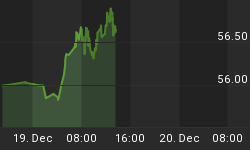This week we continued to chop within the same 50 point range we have been confined to since we bounced off the Soc/Gen lows. That forced puking of a massive position was a typical catalyst needed for a turn and this consolidation which has been overly debated among bulls and bears looks to us like healthy market digestion. Consider where we stand. Remove the Soc/Gen sell-off and we have essentially been consolidating the range between the May 2006 highs in the 1320s and the 2007 lows in the 1360s.

We pointed out in A Zero Sum Game that this period would be characterized by the strong hands/real money accounts taking over ownership from the weak hands/leveraged accounts. The apparent base building is suggestive of this transfer of assets and that real money is comfortable with these multiples and risk premiums v treasuries.
As we pointed out in Endaka, the recent COT data and a potential topping in the yen meant a good bit of the de-leveraging had already occurred. If we make a case that real money has been accumulating this chop (see Berkshire Hathaway purchases), that risk premiums had peaked, that levered money had de-levered or simply shut down portfolios and that we have a positive risk/reward ratio, then we have good evidence at least a short term bottom is in place.
Equity Exposure
If we break higher, we think there will be a rush to pile into financials and consumer discretionary which could see substantial pops as they are heavily shorted. Friday's price action that ABK's news drove into the close is a good example of what can happen when shorts need to cover at the same time. While there will be money made riding the short squeeze in these sectors, we are not buyers of the potential black hole balance sheets of financials and consumers.

We prefer to look towards sectors where balance sheets are well capitalized such as energy, materials, large cap tech and industrials. Energy and materials have been two of the best performing sectors off the Jan low. Money has no doubt rotated here due to rising commodity prices which could remain elevated as long as the Fed is easing and the dollar weakens. We like these inflation hedges while the Fed is pump priming but think there is even a bigger story at work. These companies who own scarce resources are ginning cash and there is a resource grab going on among emerging powers like China and Russia. There will likely continue to be M&A activity as companies deploy their cash to accumulate reserves and consolidate into more efficient operations. The RTP/BHP battle is an example of this activity which should keep multiples well bid.
In addition to playing the momentum of energy and materials we like the relative value of technology and industrial sectors and their non-dollar revenue sources. Technology has been one of the worst performing sectors this year as their high beta and cyclical component kicked in hard on the downside. These large cap tech companies are too sitting on loads of cash and have diversified revenue sources. The sell-off has put them into value territory with the likes of CSCO and MSFT, who each control roughly $20b in cash, both trading below 14x forward earnings. Industrials have been strong performers off the lows but still remain well off their highs of last year. While substantially more leveraged than tech we still like balance sheets of the likes of HON, MMM and UTX which trade at attractive multiples to EBITDA and earnings with high returns on equity in diverse multi-national businesses. These companies have exposure to the emerging market infrastructure boom and we think, even in a global slowdown, governments will still be spending and in many cases taking up the slack.
Our biggest concern with this thesis is the dollar and the commodity cycle. We are longer term bullish on the dollar and a rally could put commodity prices under pressure which in turn would pressure the equities. However with our barbell strategy with tech and industrials we get diversification and can mitigate commodity risk with shorts in underlying commodities and a long DXY position.
Bottom Lines: Equity prices and risk premiums seem to have found some equilibrium. We are prepared to increase long exposure if we clear this consolidation. We are looking at sectors that are un-levered, benefit from capital spending and own scarce resources and intellectual property. Despite the appeal of owning a massive short squeeze, we are fading financial and consumer discretionary sectors that rely on credit and consumer spending. We think interest rates have to go much lower to put a floor under housing prices. The wildcard is the dollar.















